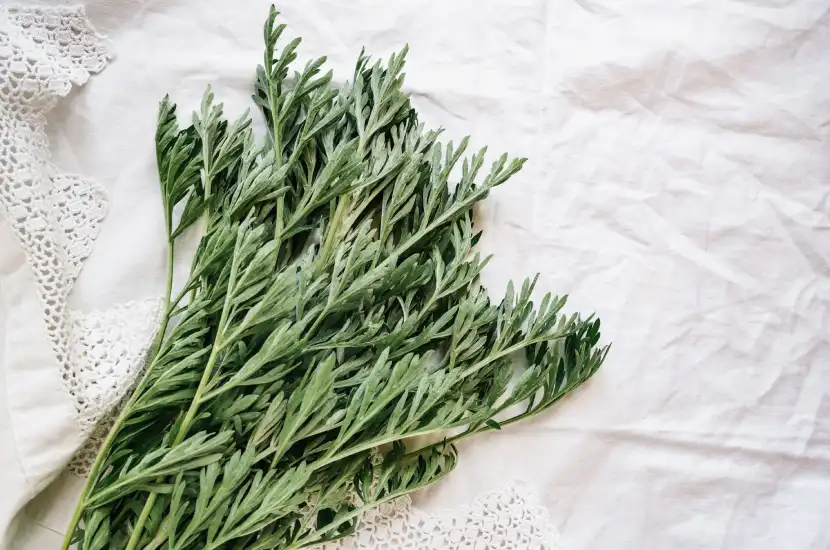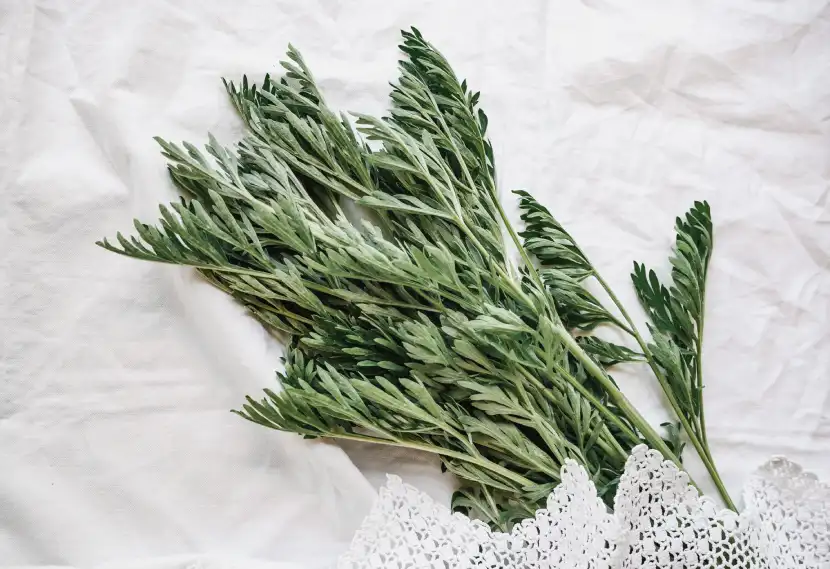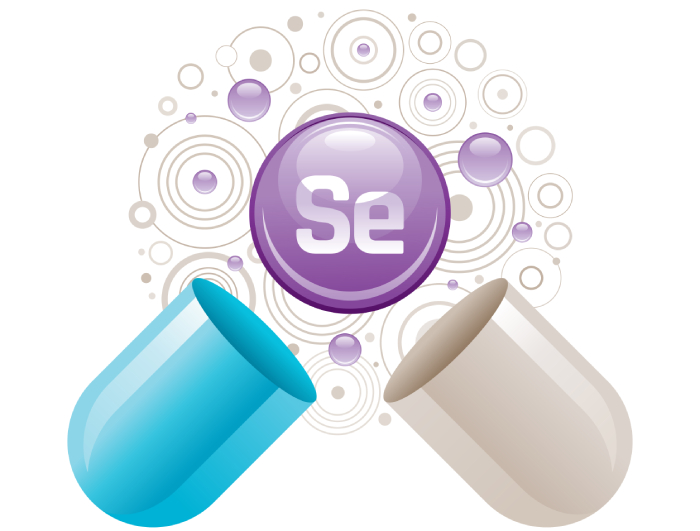What is Artemisia Annua Plant?
The artemisia annua plant, commonly known as sweet wormwood or sweet annie, has gained significant attention in the health and wellness community for its potential therapeutic properties. This remarkable herb, scientifically known as artemisia annua L, has been used for centuries in traditional medicine systems, particularly in Asian countries.
Origins and Botanical Classification
While our focus is on health benefits rather than botany, it’s important to understand that sweet wormwood artemisia annua belongs to the Asteraceae family. This annual herb can reach heights of up to 2 meters, featuring fern-like leaves and small yellow flowers. The artemisia annua leaves are particularly valued for their therapeutic compounds.
Sweet Wormwood vs Sweet Annie: Understanding the Names
You might encounter this herb under different names, which can be confusing when searching for information or products. Sweet wormwood artemisia annua and sweet annie artemisia annua refer to the same plant. These names are used interchangeably in the health supplement market, though “sweet wormwood” is more commonly used in scientific literature.

The History and Traditional Uses of Sweet Wormwood Artemisia Annua
Historical Background
The artemisia annua plant has a rich history in traditional medicine, particularly in Chinese practices where it has been documented for over 2,000 years. Its usage spread across various cultures, leading to different applications in health and wellness practices.
Traditional Applications Across Cultures
Throughout history, different civilizations have explored artemisia annua medicinal uses in various forms. From traditional tea preparations to more complex extracts, communities worldwide have incorporated this herb into their healing practices. The artemisia annua tea preparation method, in particular, has been passed down through generations.
Scientific Research and Active Compounds
Key Bioactive Components
Modern research has identified several important compounds in the artemisia annua plant, including artemisinin and other beneficial substances. These components are found in various parts of the plant, particularly concentrated in the artemisia annua leaves.
Recent Studies and Findings
Scientific investigation continues to explore the benefits of artemisia annua through rigorous research. While many traditional uses show promise, it’s important to note that research is ongoing, and many potential benefits require further study to be conclusively proven.
Health Benefits of Artemisia Annua
Immune System Support
One of the most researched benefits of artemisia annua is its potential impact on immune health. Studies suggest that compounds found in the plant may help support your body’s natural defense mechanisms. However, it’s crucial to understand that while traditional use is extensive, many modern applications are still under investigation.
Skin Health Benefits
Recent interest has grown around artemisia annua benefits for skin health. While research is still emerging, early studies suggest potential applications in skincare routines. The artemisia annua plant contains antioxidant compounds that may help protect your skin from environmental stressors. However, more research is needed to fully understand its topical applications.
Other Potential Health Applications
While the artemisia annua plant continues to be studied, researchers are exploring various potential health benefits. It’s important to note that while traditional usage is extensive, many modern applications require further scientific validation.
Different Forms and Preparations
The versatility of the artemisia annua plant allows for various preparation methods, each offering unique benefits. Understanding these different forms can help you choose the most suitable option for your needs.
Artemisia Annua Tea Preparation
Artemisia annua tea is one of the most traditional and widely used forms. To prepare the tea properly:
- Use dried artemisia annua leaves
- Steep in hot (not boiling) water for 10-15 minutes
- Start with a lower concentration and adjust according to taste and tolerance
- Consider consulting a healthcare professional about proper dosage
Essential Oils and Tinctures
Artemisia annua essential oil and tinctures represent more concentrated forms of the plant. The artemisia annua tincture is typically made by steeping the plant material in alcohol or glycerin. These preparations require careful attention to dosage due to their concentrated nature.
Growing and Harvesting Artemisia Annua
For those interested in cultivating their own supply, the artemisia annua plant can be grown in suitable climates. This section will guide you through the basics of cultivation.
Climate and Soil Requirements
The plant thrives in well-drained soil and requires full sun exposure. Success in growing artemisia annua depends on providing optimal conditions:
- Temperature range: 20-25°C (68-77°F)
- Well-drained, fertile soil
- Regular but moderate watering
- Protection from strong winds
Cultivating from Seeds
If you’re considering artemisia annua seeds for growing your own plants, timing and proper technique are crucial:
- Start seeds indoors 6-8 weeks before the last frost
- Maintain soil temperature around 20°C (68°F) for germination
- Transplant seedlings when they reach 10-15 cm in height
- Space plants 45-60 cm apart
Harvesting and Processing Leaves
Proper harvesting of artemisia annua leaves is crucial for maintaining their beneficial properties:
- Harvest before flowering for maximum compound concentration
- Cut stems in the morning after dew has dried
- Dry leaves in a well-ventilated area away from direct sunlight
- Store dried material in airtight containers
Quality Considerations When Buying
When purchasing artemisia annua supplements or other forms, quality matters significantly for both safety and effectiveness.
What to Look for in Supplements
The artemisia annua supplement market offers various options. Consider these factors when making your selection:
- Third-party testing certification
- Clear labeling of active compounds
- Manufacturing date and expiration information
- Transparent sourcing information
- Good Manufacturing Practice (GMP) certification
Selecting Seeds for Growing
If you’re interested in artemisia annua seeds for sale, consider:
- Seed viability and freshness
- Supplier reputation
- Organic certification if desired
- Proper storage conditions
- Germination guarantees
Essential Oil Quality Markers
When choosing artemisia annua essential oil, look for:
- Pure, undiluted products
- Third-party testing results
- Proper packaging (dark glass bottles)
- Detailed sourcing information
- Extraction method details
Different Products in the Market
Today’s market offers various forms of the artemisia annua plant, each designed to meet different health needs and preferences. When exploring these options, it’s essential to understand their unique characteristics and potential benefits.
Tea and Dried Herbs
The traditional artemisia annua tea remains one of the most accessible forms of consumption. The processing of artemisia annua leaves for tea production requires careful attention to preserve the beneficial compounds. Many consumers prefer this traditional method as it allows them to control the preparation process and adjust the strength according to their preferences.
Supplements and Extracts
The artemisia annua supplement market has expanded significantly in recent years. Modern processing techniques have enabled manufacturers to create standardized extracts from the artemisia annua plant, offering consistent potency and easier dosing options. These supplements often come in capsule or tablet form, making them convenient for daily use.
Topical Applications
With growing interest in artemisia annua benefits for skin, various topical products have emerged in the market. These formulations often combine the artemisia annua plant with other beneficial ingredients to create serums, creams, and other skincare products.

Safety and Precautions
Potential Side Effects
While the artemisia annua plant has been used traditionally for centuries, it’s crucial to understand potential side effects. Some users may experience mild digestive discomfort when first starting with artemisia annua tea or supplements. The concentration of active compounds in different preparations of the artemisia annua plant can vary significantly, which makes starting with lower doses advisable.
Drug Interactions
Sweet wormwood artemisia annua may interact with certain medications. This is particularly important for individuals taking blood-thinning medications or drugs metabolized by specific liver enzymes. The active compounds in the artemisia annua plant can affect how your body processes these medications.
Who Should Avoid It
Certain groups should exercise extra caution or avoid using sweet annie artemisia annua altogether. Pregnant and nursing women should consult healthcare providers before using any form of the herb. Individuals with autoimmune conditions should also seek professional advice, as the immunomodulating properties of the artemisia annua plant might affect their condition.
Comparing Artemisia Species
Artemisia Annua vs Artemisia Vulgaris
Understanding the distinction between artemisia annua vs vulgaris is crucial for anyone interested in herbal supplements. While both belong to the same genus, they possess different properties and traditional uses. The artemisia annua plant has unique compound profiles that distinguish it from its relatives.
Other Related Species
While focusing on artemisia annua medicinal uses, it’s worth noting that other species in the genus also have traditional applications. However, the specific compounds and properties of the artemisia annua plant make it distinct from its relatives. Research continues to explore these differences and their implications for health applications.
Dosage and Administration
General Guidelines
Determining the appropriate dosage of artemisia annua products requires careful consideration of various factors. The concentration of active compounds can vary significantly between different preparations of the artemisia annua plant. Users should always start with the lowest recommended dose and adjust gradually while monitoring their response.
Form-Specific Recommendations
Different forms of artemisia annua require specific dosing considerations. For instance, artemisia annua tea might require different timing and frequency compared to an artemisia annua tincture or supplement. Understanding these differences helps ensure safe and effective use.
Timing Considerations
The timing of artemisia annua administration can impact its effectiveness. Some practitioners recommend taking supplements on an empty stomach, while others suggest consumption with meals. The choice often depends on the specific form being used and individual tolerance.
FAQs
Q: What makes the artemisia annua plant different from other herbal supplements?
A: The artemisia annua plant contains unique compounds, particularly artemisinin and its derivatives, that distinguish it from other herbs. Its traditional usage history and ongoing research into its potential health benefits make it a subject of particular interest in the health supplement community.
Q: How can I ensure I’m buying quality artemisia annua supplements?
A: When purchasing supplements derived from the artemisia annua plant, look for products from reputable manufacturers that provide third-party testing certificates. Research the company’s manufacturing practices and ensure they follow GMP standards. Quality products will clearly state their artemisia annua content and provide detailed information about sourcing and processing methods.
Q: Can I grow the artemisia annua plant at home?
A: Growing sweet wormwood artemisia annua at home is possible with proper conditions. The plant requires full sun exposure, well-draining soil, and appropriate climate conditions. However, producing therapeutic-grade material requires careful attention to cultivation, harvesting, and processing techniques.
Q: What’s the best way to prepare artemisia annua tea?
A: Traditional artemisia annua tea preparation involves steeping dried leaves in hot water. The temperature and steeping time significantly affect the extraction of beneficial compounds. It’s recommended to start with a small amount and adjust according to personal tolerance and healthcare provider guidance.
Q: Are there any side effects I should be aware of?
A: While sweet annie artemisia annua has been used traditionally for centuries, some people may experience mild digestive discomfort or allergic reactions. The intensity of effects can vary based on the form and concentration used. Always start with a minimal dose and monitor your body’s response.
Q: How long can I safely use artemisia annua products?
A: The duration of use for artemisia annua products should be discussed with a healthcare provider. While many people safely use these products for extended periods, regular monitoring and periodic breaks may be recommended depending on individual health circumstances.
Conclusion
The artemisia annua plant represents a fascinating intersection of traditional wisdom and modern scientific investigation. Throughout this comprehensive guide, we’ve explored various aspects of this remarkable herb, from its traditional applications to contemporary research and practical usage considerations. Understanding both the potential benefits and limitations of artemisia annua helps make informed decisions about its use.
When considering artemisia annua supplements or other preparations, it’s crucial to approach their use with a balanced perspective. While research continues to unveil promising properties of the artemisia annua plant, maintaining realistic expectations and following safe usage guidelines remains essential. The growing availability of different forms, from artemisia annua tea to artemisia annua essential oil, provides various options for those interested in exploring its potential benefits.
For optimal results and safety, consider these key takeaways: always choose high-quality products, start with conservative doses, monitor your body’s response, and maintain open communication with healthcare providers. The future of artemisia annua research appears promising, but responsible use based on current evidence remains paramount.
Remember that while sweet wormwood artemisia annua has a rich history of traditional use and growing scientific interest, it should be considered as part of a comprehensive approach to health and wellness rather than a standalone solution. Whether you’re interested in its immune-supporting properties, exploring artemisia annua benefits for skin, or considering other potential applications, approaching its use with knowledge and mindfulness will help you make the most of this remarkable plant while staying safe and healthy.



